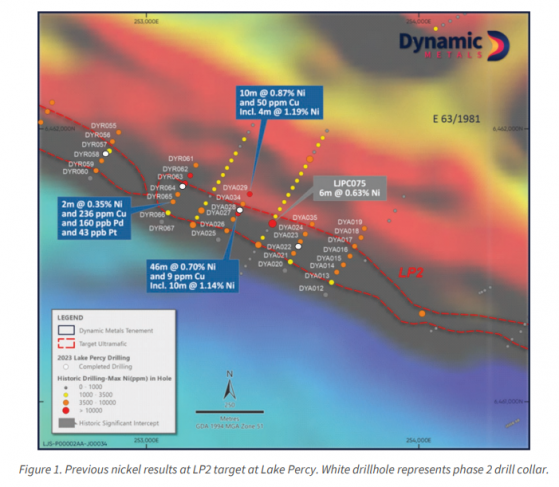Dynamic Metals Ltd (ASX:DYM) has completed extensive phase two nickel exploration drilling at the Lake Percy Project in Western Australia's Goldfields Region.
Key developments
The recent drilling program encompassed five reverse circulation (RC) drill holes, covering a total depth of 924 metres.
These holes were drilled at the LP1 and LP2 targets, following up on the encouraging results obtained from the initial aircore drilling program.
The objective was to delve deeper into the nickel and platinum group element (PGE) anomalies found during that campaign. Of these five holes, four were drilled over a span of 250 to 300 metres, specifically targeting the depth of the nickel and PGE anomaly at the LP2 target.
A fifth hole was aimed at exploring the most significant nickel and copper anomaly located at the northern extent of the drilling area.
The holes were cased, allowing for the potential use of downhole electromagnetic (DHEM) surveys in future explorations.
Promising outlook
The Lake Percy Project, 120 kilometres west of Norseman, is part of the northern extension of the Lake Johnston greenstone belt. The region is notable for hosting established nickel mines and recent lithium discoveries, making it a key area of interest for nickel exploration.
In April 2023, Dynamic Metals drilled 102 holes, combining aircore and RC drilling methods, over a total of 6,372 metres.
This comprehensive drilling aimed to enhance geological understanding and refine nickel sulphide targeting across the 10-kilometre strike of the western ultramafic unit.
This phase one drilling yielded multiple significant assay results, demonstrating the presence of a fertile nickel sulphide system. The bottom-of-hole geochemistry indicated promising nickel, copper and PGE concentrations.
With assays from this latest campaign expected by the end of January 2024, Dynamic Metals anticipates using these results to further refine its geological models.
The company will then consider additional drilling or possibly DHEM investigations as part of the next phase of exploration.
Read more on Proactive Investors AU
